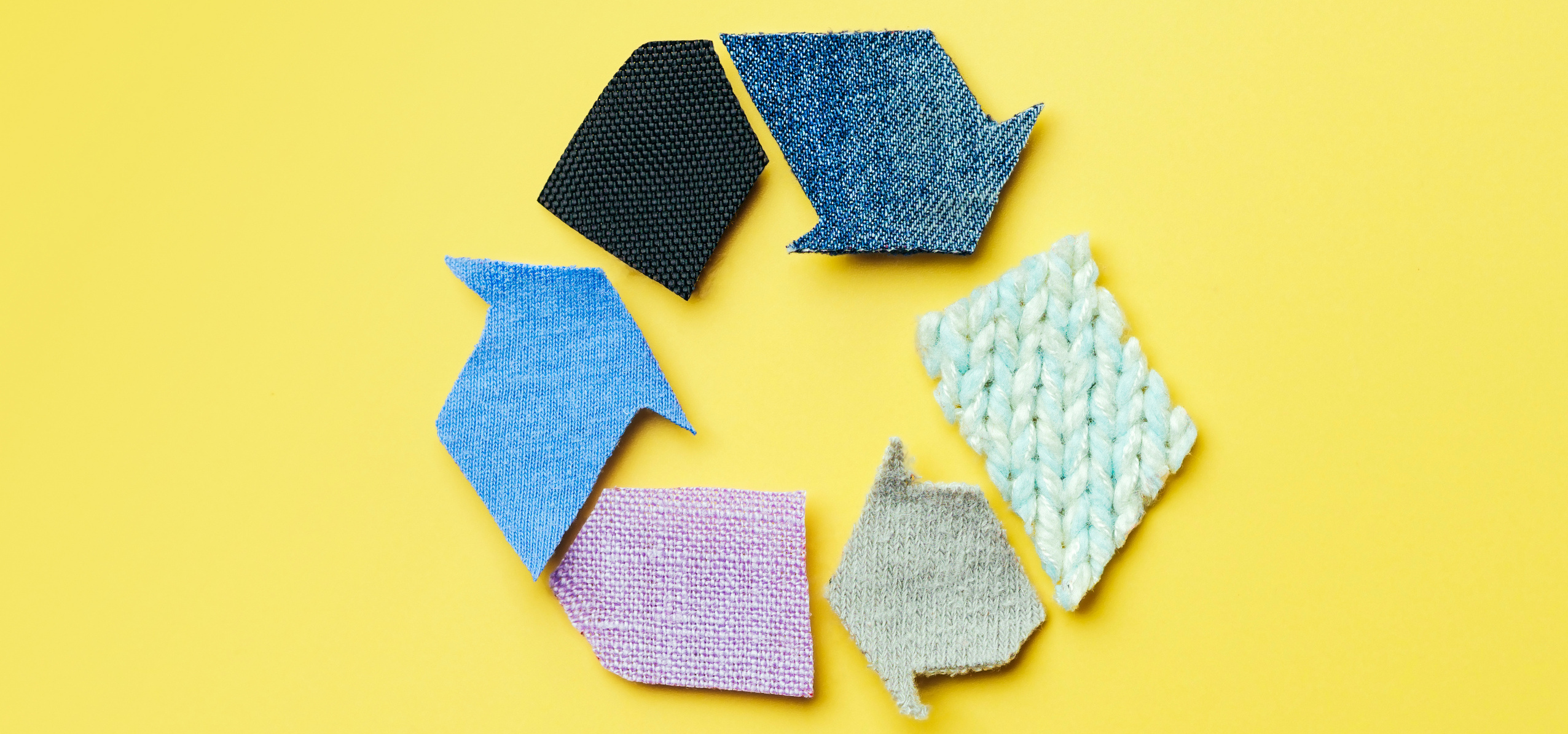The Pioneers of Material Flow

By Nico Damm, 27.04.2022
The textile sector has a huge environmental problem – and not just since “fast fashion” started flooding the global market with cheap clobber containing harmful substances. Students of the master’s programme “Risk Assessment and Sustainability Management” were commissioned by one of Germany’s outdoor clothing brands to cast a close look at the value chain. One of the outcomes of the project, which ran over two semesters, was recommendations for clothes designers. VAUDE has already incorporated these into its in-house sustainability criteria.
80 percent of clothes worldwide, that is, around 50 million tons, are thrown away – every year. Most of it is incinerated or ends up in landfills. No surprise, then, that the European Union also classifies the textile sector as a high-impact industry that consumes particularly large volumes of natural resources and is thus also responsible for CO2 emissions. Many of the chemicals used are also a problem, for example because they are toxic or can accumulate permanently in the environment.
There are, however, also some companies in the industry that have made sustainability their brand essence. One of them is outdoor specialist VAUDE. Martin Führ, law professor at h_da, has regularly come into contact with this family-owned company, which is located near Lake Constance, over many years. He likes being in the mountains and has therefore been following VAUDE’s sustainability activities for some time. So when Führ, as director of the master’s programme Risk Assessment and Sustainability Management (RASUM), which started in 2015, was looking for an industrial partner, he didn’t have to deliberate too long before picking up the phone. Soon afterwards, the first students presented a concept for optimising the company’s global supply channels.
In 2019, h_da and VAUDE joined forces once again for a new practical project: the company drew up a new call for tenders, and RASUM teams designated by lot were asked to compile professional offers. VAUDE combined the best ideas and placed an “order” with the whole group: “First we analysed the normative framework,” says Jana Krachler, who has now completed her master’s degree and started work. Krachler and her peers put their heads together and combed through directives, laws and regulations – at the level of the United Nations, the EU and individual countries such as Germany or the Scandinavian states. At the end, one thing was clear: it can be assumed that regulation is forcing companies to contribute to a circular economy – that is, to save natural resources by using existing materials and products for as long as possible, repairing them, refurbishing them and ultimately recycling them.
Here, new technologies could also help – for instance in communication and labelling. “For example, there are RFID chips the size of a grain of rice that you can stitch into clothes, or invisible barcodes,” says Krachler. These would then give each stakeholder along the value chain the information they need. For example, you can read off which materials are to be found where in the garment. According to Krachler, there is a huge range, especially in the outdoor sector: “There are many different materials, and often several layers are bonded together.” Although this ensures a certain degree of waterproofness, it makes repair and recycling more difficult.
Within the assignment, Krachler and the RASUM team immersed themselves in the world of the most commonly used textile materials, with the aim of developing an analysis tool for the design process. This “Circulitics Tool” supports VAUDE’s product developers: “They enter potential materials, and the tool evaluates them with a traffic light system,” explains Ksenia Grubets, who was also a member of the RASUM team and, having meanwhile graduated, is now working as a sustainability consultant. The outcome is an overall score – and thus an incentive to make products durable and recyclable.
However, in order to recycle materials, they must first be collected. According to EU regulations, says Grubets, it will be mandatory from 2025 onwards to collect all types of textiles separately: “But what happens after that is still open. That’s why we need tracking technologies so that we know from which materials the garment is made and how, as well as how we can best reuse or recycle it.” This makes networking essential, in addition to information. That is why the project team analysed potential partners with whom VAUDE could work together in future – and developed a concept for an “interactive information and exchange platform”. Via this platform, companies in the outdoor sector could network among themselves as well as with certification bodies in order to work together towards the goal of a resource-friendly circular economy.
![[Translate to Englisch:] Gruppenfoto der Studierenden vor Alpenpanorama](/fileadmin/Bilder/Forschung/220426_VAUDE_Kooperation_RASUM/20190714_152358.jpg)
After a final presentation at the company’s premises, the students’ hard work was rewarded: VAUDE adopted the criteria they had developed for its in-house eco-label “Green Shape” – all products must in future meet the quality criteria defined for it. “We were able to discuss with VAUDE’s sustainability specialists at eye level, which was a great sense of achievement,” recalls Jana Krachler – who, like the others in the RASUM team, had had no previous contact with the textile sector.
But on the whole there is still a long way to go, warns Martin Führ: “The technology for high-quality material recycling doesn’t even exist yet. That’s why the challenge is to design products for recycling technologies that are only in the development phase.” A lot to do, then, not only for industry – but Führ also sees new business models that are increasingly focusing on longer product life. “For VAUDE, for example, sustainability is also an image factor, a unique selling point.” The European Union is in any case introducing stricter rules step by step: the “Green Deal” pays particular attention to textiles. In future, we can expect not only increasingly ambitious recycling quotas but also guidelines for a “digital product passport”. The RASUM project has thus already mapped out the future course.